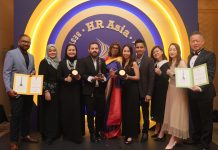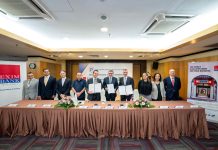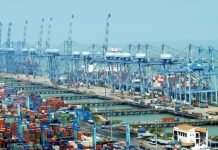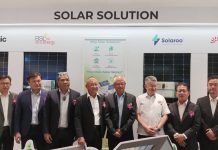The growth of Malaysian semiconductor industry has been impressive. Just like its Asian neighbors, Malaysia successfully built itself up as an attractive location for foreign direct investment (FDI).
It leveraged that to make a place of its own in the semiconductor industry. But that industry has found itself sort of caught in the middle.
Unable to invest in the future, the country’s small local clusters of semiconductor firms find themselves stuck in a tenuous place low in the value chain, with seemingly few goods prospects.
The Beginning
Malaysia began its journey into electronics assembly in the 1970s with the second Malaysia Plan of 1971-1975. The plan pushed for the creation of free trade zones to create light export manufacturing jobs.
Western semiconductor companies chose Malaysia over cheaper alternatives like Thailand and Indonesia for a few reasons.
First, they were attracted to certain aspects of the workforce. Malaysian laborers at the time were considered to be more disciplined and English proficient than their neighbors.
And second, the government dangled heavy tax incentives (10 years of tax-free policy), lucrative tariff exemptions, less bureaucratic red tape, and a lighter regulatory touch.
To ease the concerns of Western industries and kickstart the desired export manufacturing sector, the Malaysian government largely waived the Malaysia’s New Economic Policy (NEP) of ethnic employment and shareholding requirements.
The first major investments into Malaysia came from National Semiconductor and Intel. In 1972, Intel opened its first ever offshore assembly plant in the small island state of Penang in the North. Companies like AMD, Hewlett-Packard (HP), and Hitachi soon followed.
Penang today remains one of Malaysia’s core semiconductor regions. These initial factories focused on assembly and testing.
One can say that this first phase of semiconductor investment showed mixed results.
On one hand, jobs were created and exports soared. Semiconductors contributed most of the 15% annual growth in Malaysia’s electronics industry. The industry at one point represented 20% of the country’s entire Gross Domestic Products (GDP).
Exports grew by nearly 70%. In 1978, Malaysia exported $658 million dollars of semiconductors to the United States. This massive number was on par with Singapore and South Korea and three times larger than Taiwan.
Judged on terms of employment, also a green checkmark. Between 1973 and 1985, employment grew by an average of 61% each year. Malaysian unemployment rates in the 1970s reached 8% and poverty was widespread, so this growth was welcomed. Unemployment would fall to 4% by 1980.
All good so far, but, there were items for concern.
For one, the jobs were definitely not easy. Working conditions in these test and assembly factories were – to say the least – not great. Plant managers did not properly observe safety regulations. Workers, mostly women, complained of failing eyesight and heavy, unfair discipline from their managers.
These jobs paid little too, though much better than other factory and textile jobs available at the time. To compare with other nations, the average hourly wage in 1973 was RM13 in Japan, RM12 in the United States, and just RM1.43 in Malaysia.
The work hours were relentless. The Malaysian government amended a previously existing labor law to allow 24 work hours a day, done in three shifts. Paid holidays off, sick days, and maternity leave were at a minimum and high unemployment meant that the companies could lay off bunch of workers at will.
Workers complained about being laid off with no warning. Physical stress was through the roof. But worst of all, the workers were not learning anything.
From a policy making perspective, a critical goal of attracting these multinational companies to set up firms here was to “upgrade” the knowledge and know-how of the people.
You would want technology transfer from the multinationals to domestic firms. But the way these companies set up their factories and the stock ownership prevented such transfers from happening.
Workers did not see the whole process from beginning to end. They were segmented and isolated to doing a single task with no visibility to anything else. They were worked too hard to learn anyway.
The Malaysian government realized that the domestic semiconductor industry was not upgrading itself and decided it needed to recalibrate its policies. But before it could, the market performed a recalibration of its own.
The mid-1980s offered an opportunity amidst pain. A wave of overproduction plunged the entire electronics and semiconductors industries into a crisis. This happens from time to time in the industry.
The down cycle triggered a wave of layoffs and consolidation around the world. Semiconductor employment in Penang went from 19,000 in 1983 to 18,226 in 1985, to 13,100 in 1986.
In the wake of this devastating collapse, there was hope. The Malaysian semiconductor industry survived and got healthier.
Underperforming companies were taken over. Smarter companies used the crisis as an opportunity to upgrade their operations, bringing in more automation and preparing for when the good times return.
Furthermore, the 1985 Plaza Accord forced the appreciation of the Japanese Yen, New Taiwan Dollar, and Singaporean Dollar against the United States Dollar.
This ate into the competitiveness of manufacturer exports in Taiwan, Japan, and Singapore. Exporter in those countries thus set out for cheaper grounds overseas. Many of these companies would settle in Malaysia.
Focusing on the recession and seeking to take advantage of these secular trends, the government sought to get people working again. They devalued the Malaysian Ringgit and extended a series of investment tax credits.
Combined with the wave of FDI investments from Japan, Taiwan, and Singapore, these moves succeeded. Employment and exports rebounded.
But this recession prevented the Malaysian government from doing what it had wanted to do and what Taiwan and Singapore were able to do: Upgrade their industry’s place in the value chain.
For several years, the government instead focused on improving the wages and working conditions of its semiconductors factories workers. Important yes, but not the greater goal.
It was not until the 1990s that they finally took major steps toward technical upgrading with Silterra.
In 1985, Malaysia’s First Industrial Master Plan, which spans the time from 1986 to 1995, emphasized the upgrading of skills, technology transfer agreements between multinationals and domestic firms, and the establishment of local suppliers. Lofty goals, but the plan’s actual thresholds remained relatively humble due in part to the ongoing recession at the time.
That same year, the government established the Malaysian Institute of Microelectronics Systems (MIMOS) with the goal of developing an indigenous semiconductor industry.
Begun as a part of the Prime Minister’s office and spun out into an independent organization/corporation in 1993, it would be Malaysia’s answer to Taiwan’s ITRI.
In 1995, the institute came out with a plan of action: The Action Plan for Industrial Technology Development (APITD). It laid out a pathway towards building semiconductor national champions within the chip design and wafer fabrication sectors using the Taiwanese industrial model.
Malaysia decided that it needed a TSMC of its own to diversify away from back-end technologies.
Thus, in 1995, MIMOS launched Wafer Technology (Malaysia) Sdn. Bhd. The startup would be later renamed Silterra. But as we mentioned, things got off to a slow start.
The idea to launch Silterra first emerged in 1995, but the actual company did not launch until 2000 with the completion of its first lab at the Kulim Hi-Tech Park.
MIMOS had attempted to find a foreign technology partner for the launch but there were no takers. Thus, Silterra launched with only its own indigenous technologies, far behind the cutting edge.
In contrast, Morris Chang came up with the idea for TSMC some time in the mid-1980s and the company launched less than three years later in 1987 with a three micrometer process, just one or two generations behind the cutting edge.
The company launched with full technology participation and patent protection from Dutch electronics giant Phillips.
Silterra started quite late and a little behind in the industry. This is not necessarily a deal breaker. After all, SMIC launched at around the same time too and were similarly behind.
SMIC was able to advance their leading edge node processing and “catch-up” very quickly. But Silterra lacked many of the advantages that SMIC had at the time.
First and foremost, SMIC was infused with amazing human capital. It had TSMC DNA. Founder Richard Chang brought over with him a massive team to help him scale his factories and bring them up to speed faster than any other startup foundry ever had before.
Human capital as it turns out would be Silterra’s greatest weakness. TSMC has Morris Chang as its CEO, an American with extensive experience in the industry. SMIC, had Richard Chang (not related) a CEO already on his second foundry startup.
But Silterra, to be charitable, did not have that. The company’s early top leadership lacked tacit knowledge and experience with the front-end semiconductor industry. Again, not an unusual situation. What should have been done, was to bring in someone who has that experience. Singapore’s Chartered Semiconductor brought in expat talent from abroad too.
There are even several talented Malaysian semiconductor leaders like Kin Wah Loh. But for whatever reason, Silterra declined to bring in that kind of talent.
Weak linkages between the industry and the universities further stemmed a potential pipeline of indigenous talent. As a result, the company failed to make ground within the ultra-competitive semiconductor industry. Today, it is the 16th largest pure play foundry.
As is so often is the case for lower-ranking foundries, Silterra mostly made losses year after year. Annual losses got to as high as $100 million dollar a year according to the Business Times.
From 2008 to 2017, the company’s total losses were second only to Malaysian Airlines.
In 2019, the company’s net profit margin declined by 40 percentage points and lost $41 million dollars. The losses forced the company to de-emphasize R&D and focus on getting profitable.
Silterra was own by the country’s sovereign wealth fund, Khazanah Nasional, which has its own profit-making priorities. Thus, the foundry was the subject of sale rumors as early as 2011.
Khazanah is not super excited about bankrolling these losses even as everyone recognizes its strategic importance.
In 2021, Bloomberg reported that Khazanah finally sold a big stake in the firm to a consortium of Malaysian and Chinese investors for $150 million dollars. The investors have announced a turnaround plan and another capital injection to make Silterra great again.
Now, to the present day. First, the good.
Consumers still want Malaysia’s electronic goods and services. In 2019, the industry made up 34% of the country’s total shipments abroad. More than its petroleum and palm oil industries.
And the growth trend is on the up and up with 2019 up from 2015. Penang is responsible for some 8% of global back-end semiconductor output.
There also exists a number of publicly listed Malaysian semiconductor companies. Two are valued at over a billion US dollars.
The first is Inari Amertron Berhad, Malaysia’s largest listed tech company. It does OSAT for radio and optoelectronics products in nine factories around Asia. Inari is the biggest member of a Malaysian Big Four. MPI, Unisem, and Globetronics Technology are the other three.
Second, is ViTrox, Malaysia’s largest equipment maker and a provider of automated testing equipment for the semiconductor packaging industry. Its cofounder and CEO, Chu Jenn Weng is one of Malaysia’s richest man.
So all of that is the good. Now, for the not so good. As you might have noticed from the list of companies just mentioned, the industry’s strengths remains in assembly and testing – the same as it has been since the start. Which means it holds low value in the value chain.
Furthermore, there are challenges coming from both the high and low ends. On the high end, you have companies like ASE Group pushing the envelope in chip packaging technologies and taking share at the high end. TSMC is also looking to offer advanced chip packaging solutions too.
On the low end, challengers from China, Vietnam, and the Philippines seek to take a chunk of that market for themselves.
An inability to spend on R&D research or find sufficient human capital remains a prevailing challenge. Indigenous firms cannot afford to pay well. So talented Malaysian scientists and technicians would rather go to Australia, Singapore, or the United States to work.
To stay competitive in the market, semiconductor firms import affordable, talented labor from abroad, something that Malaysia did not follow until recently.
Today, Malaysia hosts the most foreign workers in Southeast Asia, as many as 3.3 million according to 2017 estimates. Half of them are illegal.
Lastly, the industry is still dominated by foreign multinationals. Remember what we said earlier on about the lack of technology transfer? That remains the case to this day.
Indigenous semiconductor OSAT firms like Inari are the exception, not the rule. The majority of the industry remains foreign-owned, a situation that the government has not been able to dislodge.
Is not all bad, we should still admire and praise Malaysia for having done this much. For having created the semiconductor industry from scratch. There are many places which have failed to even get this far – like Hong Kong.
But we must also acknowledge that there are still many ways to go in the journey ahead. Malaysia’s semiconductor story is an interesting study – a lesson in striking delicate balance.















Digital transformation is a MUST and will be very VITAL for the survivor of a company. This will creates a system for gathering the right data and incorporating it fully for business intelligence at a higher level to make the correct business decision.